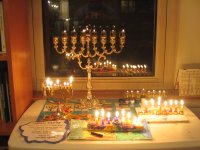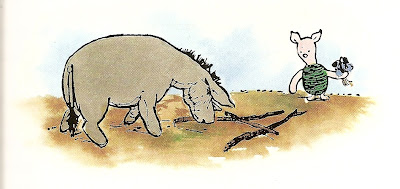Beyond BT just posted a true must read titled “What, Judaism Can Actually be Fun?”. For those “kiruv professionals” or the ever growing group of non-professional kiruv individuals, this post is worth the read.
Category Archives: kiruv
Feeling burned out…
Burn-out, Off the derech, Timtum HaLev, observabots, general lack of feeling while performing mitzvos. Call it what you will, but recently it’s been a topic among many bloggers. Why? I’d venture to say that it is because most people are worried about someone they know or even themselves. To be on fire, excited, and passionate about anything all the time isn’t easy.
If inclined, I’m listing a few links for online reading as well as two mp3 shiurim that might help anyone. I’ve, personally, found them useful.
Reading
Adults at Risk: by R Mordechai Becher and Rabbi Chanan (Antony) Gordon- A well written article that address this issues and offers suggestions
Burn-Out: by The Ner LeElef Institute- This document was written for the “kiruv profession”, but don’t let that stop you from reading…with an open mind and heart
Inspiration and Disappointment: from LIVING INSPIRED by Rabbi Akiva Tatz- If you haven’t read this, he explains why we need to go through a period of excitement and then hit the bumpy roadListening
Listening
Getting High, Staying High: Rabbi Akiva Tatz (fourth shiur on the list)- This is the mp3 shiur of the same concepts found in the above link
Loving Yiddishkeit: by Rabbi Shaya Cohen (third shiur on the list)- While geared toward parents, the information, insights, and advice are hands-on and can be applied for anyone
To be continued…
A must read kiruv article
Rabbi Avi Shafran just posted an amazing article, here.
Sunday’s Spark of Mussar
Rabbi Yisrael Lipkin of Salant
In Koenigsberg, after R’ Yisrael had ascertained that he could not influence the storekeepers to close their stores on Shabbos, he made up with them that at least they would not bring their keys from the house to the store on Shabbos; but would hide the keys close to the store instead.
From Sparks of Mussar by R Chaim Ephraim Zaitchik
New Day Rising
Vayeira’s message to former Kiruv Professionals
This was originally posted as a comment I made on Rabbi Without A Cause’s blog, here.
My shul’s Rav based his second day Rosh Hashana on something taught by the Rav Soloveitchik, who asks what happened to Avraham after the Akeidah?
All we know is that he went to Ber Sheva and settled there. After Akedas Yitzchak, the Torah doesn’t record that Hashem speaks again with Avraham. What was he doing? Rav Soloveitchik answered this question as follows. After a lifetime of serving Hashem, teaching Torah, and converting hundreds to monotheism, it seems that the Torah tells us that Avraham ends up he living in Ber Shevah among is his family, his nephews/ nieces and their children. Avraham mostly spent time with his family and helping to strengthen their yiddishkeit.
For me this really hit home. I spent 12 yrs involved in kiruv and communal work. Like many of my former friends and former colleagues, eventually I chose to leave that velt for the ‘private sector’. The people I’ve known who have left outreach are amazing people. The kind of people that organizations really can’t replace. I think that what Rav Soloveitchik is telling us is that while working for klal Yisrael and for a kehillah is very important, when you stop, life goes on. Family is what matters. You can be a shiach for Hashem and m’karev tens if not hundreds of individuals, but if you are not successful with your own family, then how successful are you?
To take 15 minutes and sit and bentch word by word with an unaffiliated teenager is a great thing to do. To take time and do Chumash homework with your own kids is just as chashuv. Gut Shabbos Kodesh.
This d’var Torah is being given over Zecher Nishmas Dan Haleiv ben Aharon.
At Risk…
 (from fotosearch.com)
(from fotosearch.com)
I don’t mean to make light the issue of our kids’ being ‘at-risk’. I have posted my thoughts and concerns about the issue in the form of comments on several other blogs. It’s an important issue.
Of course, it probably means very little that a goosling is walking behind the rest of the group. The scene did hit me pretty hard, though. Even though one goosling was behind, it was still walking in formation with its’ family. This, to me, is a powerful statement.
Sadly, once in a while, I catch myself talking to my kids about what they didn’t do right. Despite coming home after a day at work, a frustrating trip to the grocery store, or even several attempts to get someone to make their bed, my kids are, B”H, like the gosslings. They stay in formation and that’s what’s important. It’s a bracha.
A Kiruv lesson from Eeyore
The Menorah in the Window…

I admit, this posting has been sitting in my head for over a week now. I thought it would float away, but it hasn’t.
I find myself constantly seeing menorahs in many different windows.
I actually started seeing them about 3 weeks ago. The first one was in Skokie, IL. The menorah was painted on the window of a pizzeria/sports bar. This menorah was, of course, accompanied by the familiar “Happy Chanuah” painted message, to their Jewish customers. I couldn’t decide if I was supposed to laugh or cry. Then I saw several more in other windows of completely non-kosher eating establishments.
The lighting of the menorah and a ‘traditional’ seder on Pesach are the two most common rituals among our not-yet-observant brothers and sisters. I’ve always thought it ironic that the lighting of the menorah is such a common tradition. The menorah is the symbol of Torah shebal peh, our Oral Law. Our acceptance of this Oral Law is a cornerstone in what helps define the Torah Observant Jew. Yet, it ends on some odd windows. Why?
I think that seeing a menorah painted on a window of “The Villiage Pizzeria” or Burger King does help our brothers and sisters connect with Judaism.
I recently was reading the Sfas Emes and found something amazing. He says that that certain wicks are pasul for use to light neiros on Shabbos, yet acceptable for use on Chanukah. The Sfas Emes says that Chanukah can penetrate a neshama in a way that Shabbos can’t. Chanukah reaches the essence of a yid.
The Thursday before Chanukah I had to go to the post office. The woman at the counter in front of me was having a conversation with the postal officer (who wasn’t going postal). It went like this…
Postal worker: Are you getting ready for the holidays?
Woman: Yeah, Chanukah starts tomorrow night. My boyfriend wants me to light the candles and the whole thing.
Postal worker: That must be nice.
Woman: I guess so. My boyfried isn’t Jewish, so the whole thing is new to him. The truth is that I really don’t want to do it. I haven’t said the blessings in years. I remember my mom mumbling the blessings, but she really didn’t know the words either. I guess I’ll fake it.
Sad, isn’t it? My 4 year old knows the brachos and even what the Greeks did to the Beis Hamikdash (“They put piggies in and stautes”). This grown adult doesn’t even know that much. It’s not her fault. She falls into the category of a Tinuk Shenishba.
I got out of line and ran to my car. I came back into the post office as the woman was leaving and said, “I couldn’t help but overhear your conversation. Would you like this box of candles. The blessings are in English on the back of the box.”
She smiled and said thanks. I don’t always carry extra candles with me (although I have in the past). I actually had just bought them for our kids, but it’s no big deal to give a 19 cent box of candles to another Jew.
I don’t write this to blow my own shofar. I write it make a point. What I did wasn’t special, it’s just my personality.
There are Jews everywhere who just don’t get it. They never had the opportunity to learn what we know. Or the learned it, but it was shoved down their throats and it tasted gross. Every day I daven for an opportunity to be a klei to bring others closer to Hashem. That day, I happened to have my eyes and ears open. It doesn’t always work out, but sometimes it does.
Last Shabbos night my son and I walked to shul the ‘long way’. I wanted to see some of the windows in our neighborhood. Home after home with menorahs in the windows. I said to my son, “I am very happy. Do you know why?”
He answered, “Because we live in Jewish neighborhood, and Baruch Hashem, there are a lot of menorahs around.”
He, of course, was right. Chanukah is almost over, but the reality is that where are always wicks that are waiting to be lit.
‘Mapquest Yiddishkeit’
Don’t let the title throw you off, just stick this one out for a minute or two. I’ve been living in Chicago for nine months now, and I really have no clue about where things are geographically. I don’t really use a map anymore, I use Mapquest. I can tell you what exit I need to take to get to a museum, or how many miles I need to go until I turn left to get to someone’s house, but I can’t place too many locations on a map. I’ve become a product of what I’d like to call the ‘Mapquest generation’.
I contrast this with living in New York (1991-1997) where, I felt, I had a pretty good grasp of where thing were in each borough and Long Island (with the exception of a few neighborhoods in Brooklyn and all of Jersey). The main reason that I knew how to get places was because I used maps, not Mapquest. I knew streets as streets, and what was located nearby because I used a map.
With Mapquest one only knows how to get to their location, not what else is around the area.
I think there is a difference between knowing the directions of how to get to a hashkafic location and knowing where ones’ hashkafa is relation to other hashkafos.
I just hope I don’t raise a generation of ‘Mapquest Jews’. What I mean is Jews who know only how to get to their own derach and don’t see where they are in relation to other acceptable avenues and streets of Torah Judaism. Understanding where you are holding and respecting other is key how we function with a frum society.
The ‘Maquest model’ does have some redeeming value. For me it can serve a very useful function. When I am not on target with my Avodas Hashem, there is value in just getting basic directions to where I need to go, without the details of the surrounding area.
I know there are areas in which I slack. Davening b’tsibur is a challenge for me, at times. Applying the Mapquest approach would mean that I should focus only on my destination, in this case getting to a minyan. Where I am, in relation to others, in Avodas Hashem is only important in terms of chizuk.
It says in Peirkei Avos, “Ha Makir Es Makomo”, one should know ones’ place.




